Understanding Days Sales Outstanding (DSO): Calculation Techniques and Importance in Finance
No matter what your position in the company is, understanding DSO and the role it plays in your revenue cycle is key. Let’s take a look at what exactly DSO is, how to calculate it, and debunk some common misconceptions.

The overall median of days sales outstanding (DSO) across industries is 56 days, according to a 2024 report. If you don’t work in accounts receivable (AR) this statistic likely doesn’t mean much to you. However if your business (like most others) relies on prompt payments from clients, DSO can have a huge impact on your bottom line. As well as the overall growth of your organization.
This powerful metric serves as an indicator that reveals how effectively your company collects on owed revenue. A high DSO means it takes longer for you to collect on your payments.
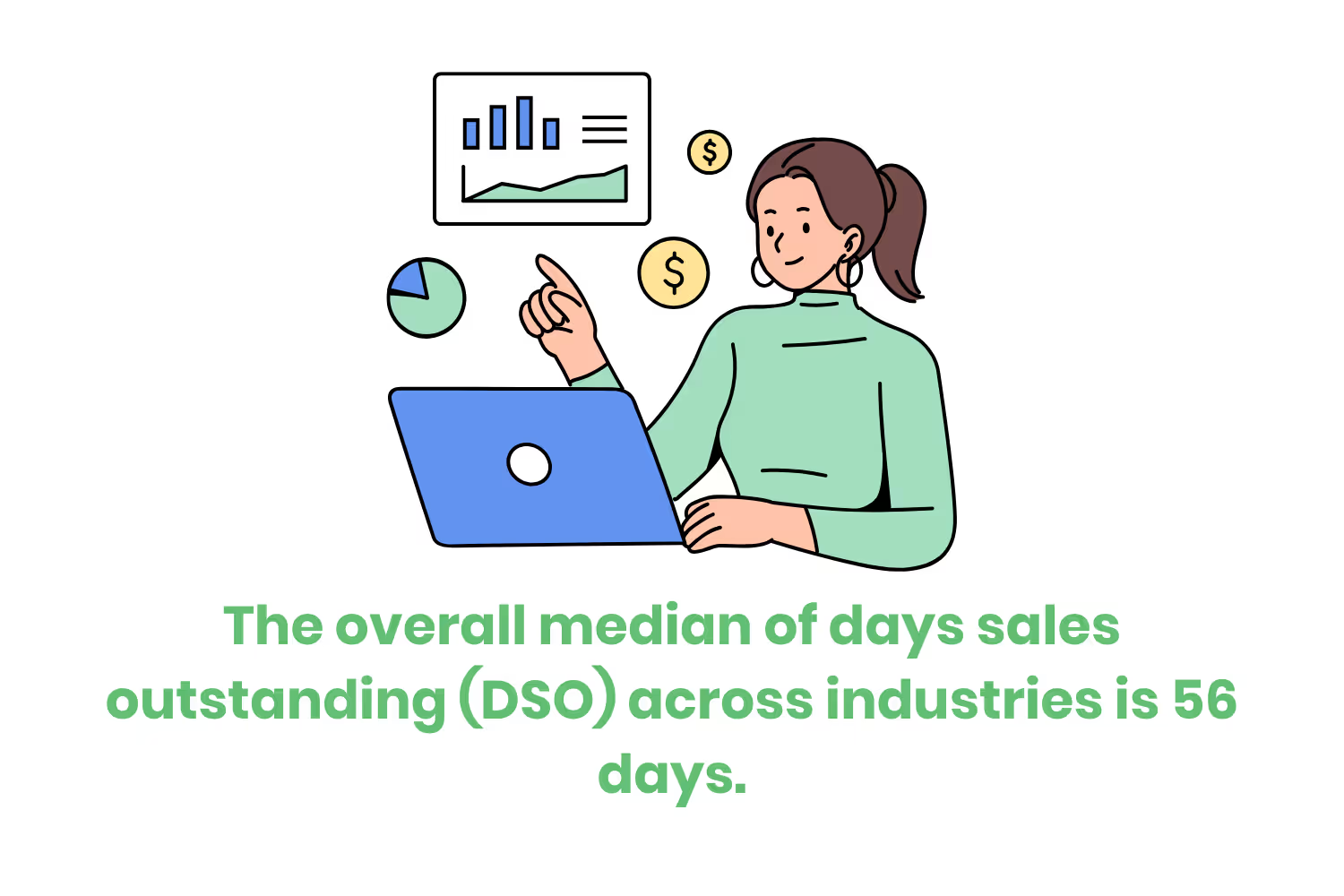
This can lead to financial instability, cash shortages, and difficulty keeping the doors to your business open. Because of this sobering reality, low DSO is the goal. The lower the better!
A low DSO keeps your revenue flowing, thus simplifying your day-to-day AR activities. No matter what your position in the company is, understanding DSO and the role it plays in your revenue cycle is key. Let’s take a look at what exactly DSO is, how to calculate it, and debunk some common misconceptions.
What is Accounts Receivable (AR)?
Before we get into the nitty-gritty of it all, let’s go over what AR is first. This billing component is a key pillar of any business’s healthy financial ecosystem. Having a well-managed AR system provides all sorts of benefits such as:
- Improved cash flow.
- Reduced bad debts.
- More efficient operations.
- Enhanced supplier and customer relationships.
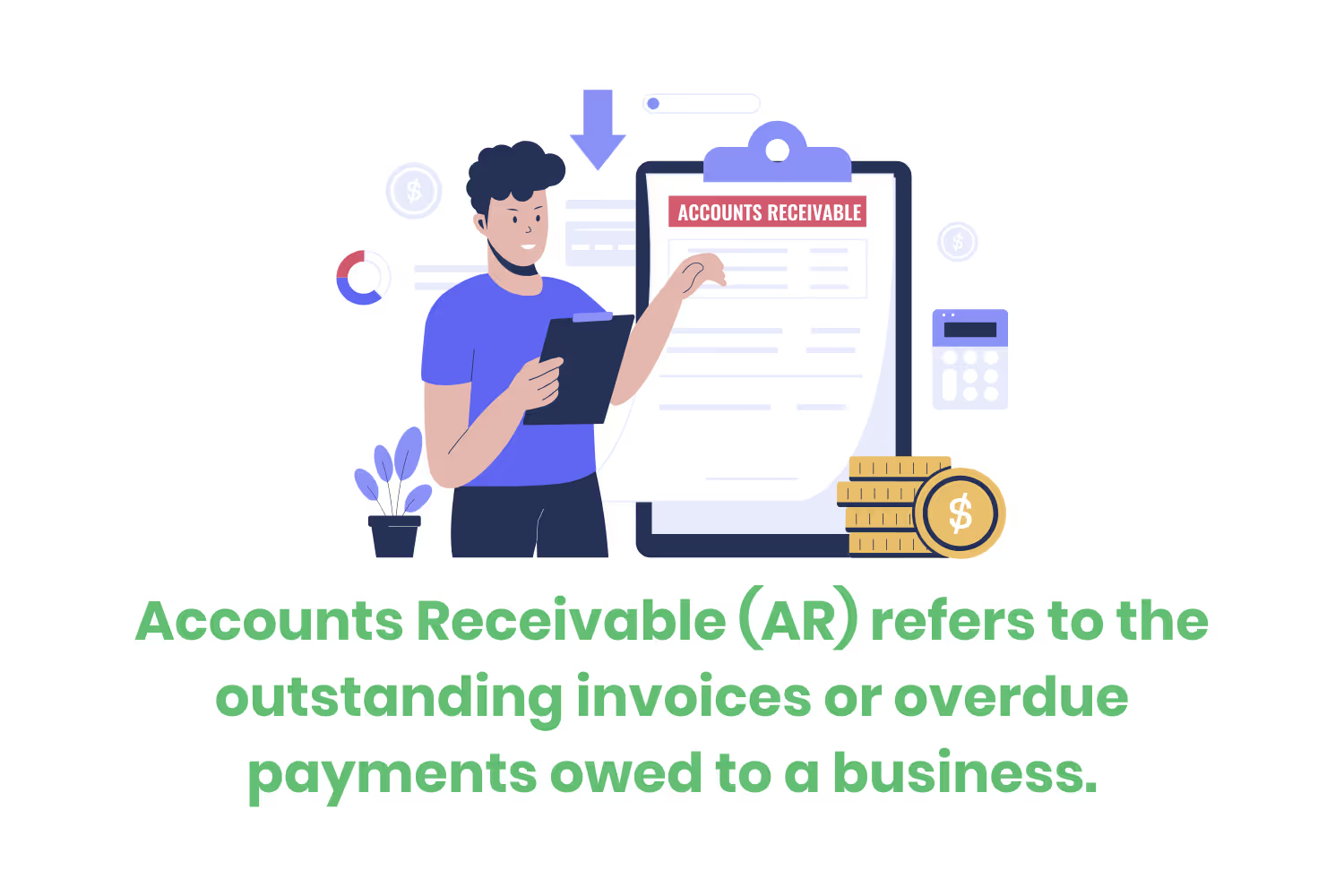
AR refers to the outstanding invoices or overdue payments owed to a business. More specifically, we are talking about money owed for goods or services provided on a credit. Money not collected yet. Too many overdue payments and you’re looking at an accounting nightmare.
AR also happens to be the name of the task for collecting any outstanding balances. There is usually an entire AR team in charge of following up on the uncollected revenue. This function includes more individual tasks and even more acronyms to remember, such as DSO. This is the perfect segway back to the topic of this blog, if I do say so myself.
What is Days Sales Outstanding (DSO)?
So you work in AR and need to know what DSO is and how to calculate it? Say no more, I’ve got you covered. Once again, DSO stands for Days Sales Outstanding. It is a metric businesses use to measure the average number of days it takes a company to collect on payment after a sale.
You can use this formula to keep track of your efficiency and collections processes. The lower the DSO, the more efficient your revenue collection process is.
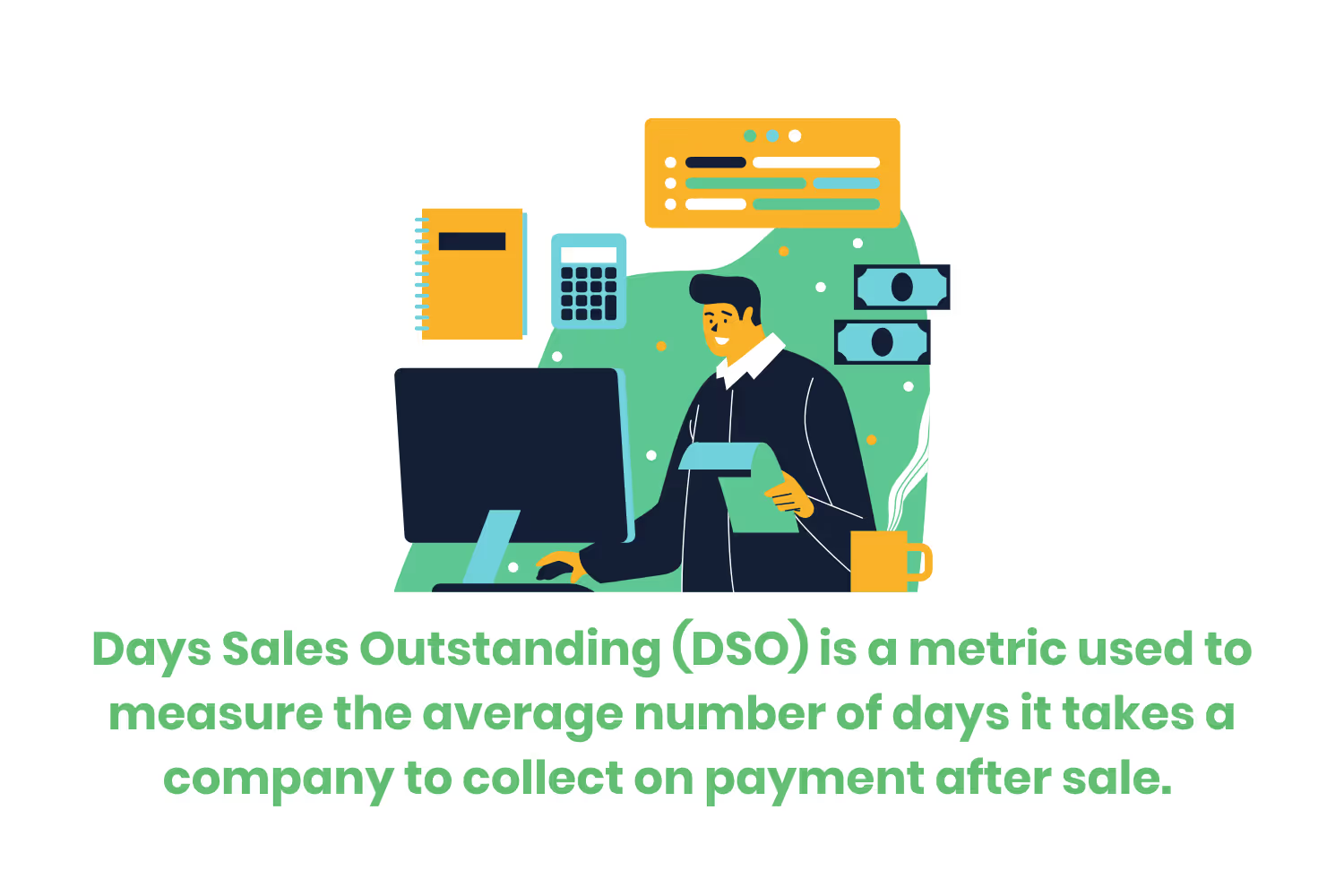
The higher it is, well the more likely you have some inefficiencies and errors to iron out when collecting receivables from customers.
Through measuring and analyzing these numbers, businesses can have a better handle on their cash flow management. So how do you calculate DSO numbers? Let’s get into it.
How to Calculate DSO
The standard formula for calculating DSO is (Accounts Receivable ÷ Net Credit Sales) × Number of Days = DSO. For reference here are some definitions to help you better understand the formula as a whole:
- Accounts Receivable is the total outstanding invoices/payments during the measured period.
- Net Credit Sales are the total credit sales made during the measured period.
- The number of Days is the time frame you are measuring (this can be weekly, monthly, yearly, etc).
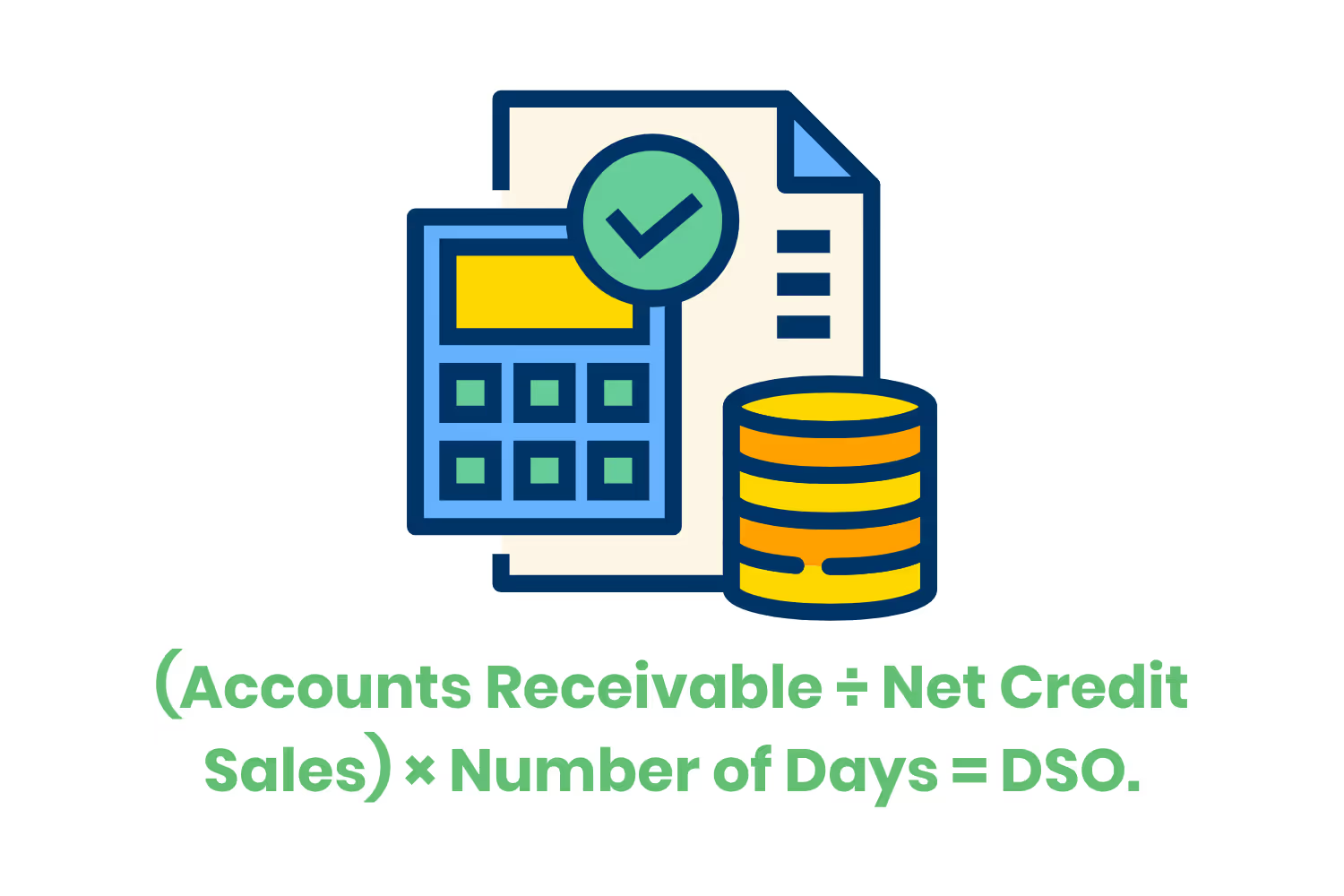
So let’s put this formula into practice for more of a working example. Say you own a healthcare center and have $50,000 in your AR balance sheet for the year. Your total annual revenue is $1,000,000.
Your formula would look like this:
($50,000 ÷ $1,000,000) × 365 = 18 days for DSO.
This signifies that your company recovers owed revenue within an average of 18 days. Which by the way, is pretty remarkable as most companies aim to have a DSO below 45 days!
Let’s do another one. This time, you want to find out what your DSO is for 40 days instead of annually. Let’s say you recorded $10,000 in net credit sales with $3,000 in AR. Your formula would look like this:
($3,000 ÷ $10,000) × 40 = 12 days for DSO.
Remember to only consider credit sales when calculating for DSO. Cash sales have a balance of 0 because they do not affect AR.
What Does a High DSO and a Low DSO Mean?
Keep in mind that there is no magic number when it comes to DSO that represents excellent or poor AR management. This is mostly because these numbers tend to vary by the industry your company is in and also any underlying payment terms. Generally speaking, a lower number is going to be more favorable, as I mentioned before. Let’s go over the implications of having both a “high” and “low” DSO as a business.
Higher DSO
A company that has a higher DSO takes more time to collect its dues. Again, it all depends on your industry, but many business owners consider a DSO of 45 and above “high” and not favorable. After all, these high numbers represent the amount of days a business goes without being able to convert sales into cash.

There could be many reasons why a DSO is on the higher side. The main problems seem to boil down to two big ones: customers who continue to not pay on time and inefficiencies within the business’s AR management. This of course leads to different cash flow challenges and even potential bad debts.
Lower DSO
When it comes to DSO and AR, less is definitely more. A lower DSO suggests a business collects its debts in a shorter amount of time. This is usually due to a combination of prompt-paying customers and an efficient collections process. Both are very ideal collection scenarios as a business owner! It also suggests that the existing accounts receivable are “good” and aren’t seen as “bad debts” like with higher DSO.
More on DSO Metrics
With all of this in mind, just because you have a low DSO doesn’t necessarily mean things are straightforward. While it is a valuable metric, you should be aware of common pitfalls. Take this into consideration: a relatively low numerator value, or net receivables value, indicates the collections team has effectively collected on dues.
A relatively high denominator value, or net sales value, may indicate that your credit and sales team extended credit without proper risk assessment. This would display a low DSO initially, but the lenient credit policy would ultimately result in faults or bad debts. So it’s always important to continue to monitor your AR insights regularly to keep track of these metrics.
This also applies to sales fluctuations. A sudden increase in sales might lower your DSO initially. However, it takes analyzing trends over multiple periods, not just one, to accurately read whether collections are improving.
Why is DSO Calculation Important?
DSO calculations are important because they can quickly give you insight into if your company’s credit and collection efforts are effective. In other words, monitoring and calculating DSO can help you plan your roadmap for reinvesting cash collected into your business for future growth. Monitoring your efficiency over time allows you to adjust credit or collection policies when needed.
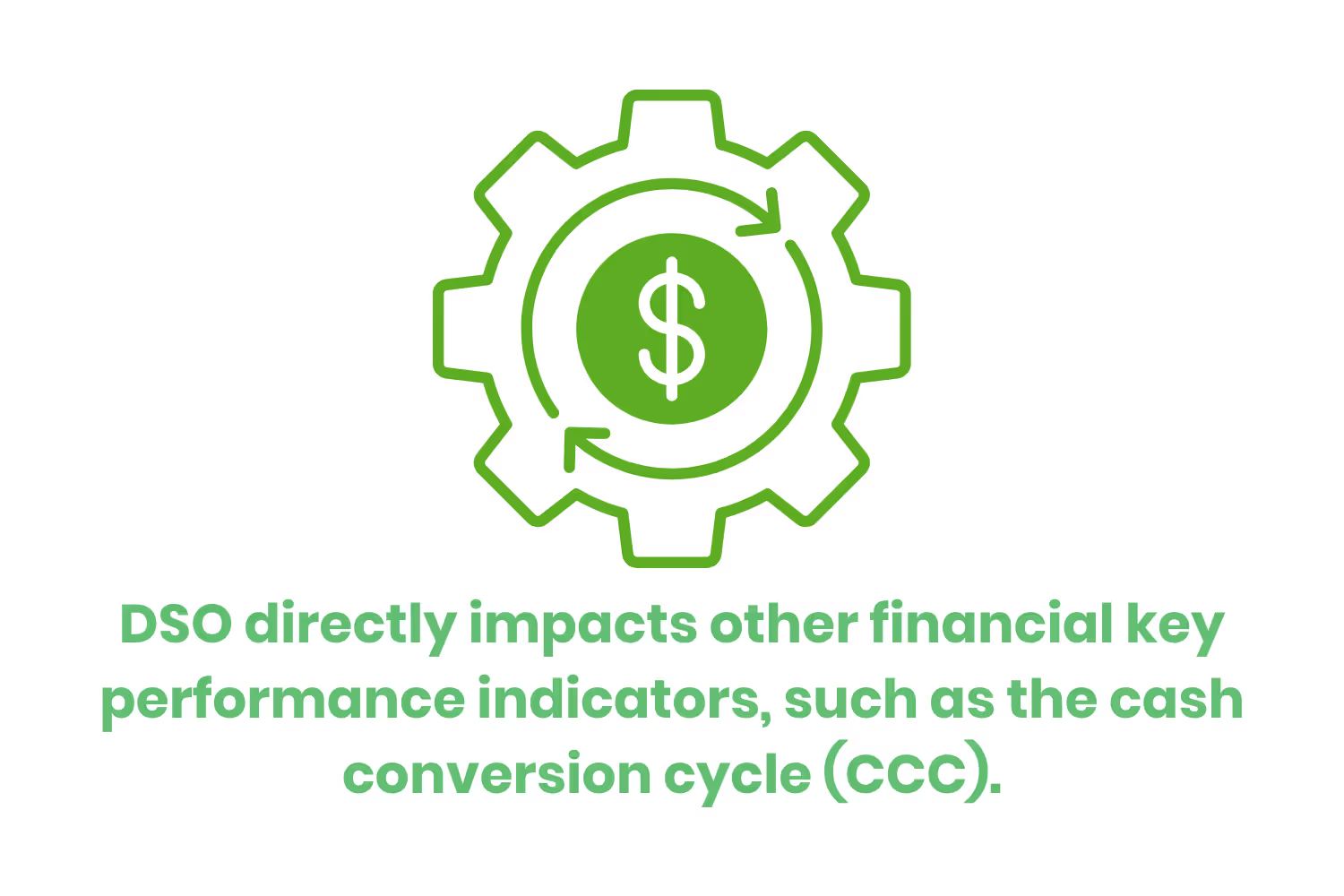
DSO is a crucial financial metric that directly impacts other financial key performance indicators (KPIs), such as the cash conversion cycle (CCC). It is an invaluable tool for investors and stakeholders to refer to when gauging a company’s financial stability and liquidity.
AR teams also use DSO to analyze trends on an individual customer level. Which could lead to much-needed changes in credit and payment terms on a case-by-case system. Optimizing and calculating DSO goes much further than just collecting payments faster. It supports and maintains your company’s entire financial operation.
Strategies to Improve Your DSO Number
There are a few key strategies to follow if you want to lower the DSO number of your business.
Here are our top 5 tips to improve your DSO number:
- Simplify payments and make the whole process more customer-friendly. A self-service payment portal for instance enables clients to make payments at their convenience. Even if it is after business hours. Providing multiple payment options is also always encouraged.
- Incorporate automated invoicing systems. This keeps your AR processes functioning in a timely and accurate manner. These ensure that your invoices, and any follow-ups, are being delivered exactly when they should be. Not a day too early or too late.
- Establish well-defined terms of payment before rendering services. Consider setting net 30 or shorter terms for payment. This encourages prompt payments from customers upfront.
- Monitor and adjust your DSO over time. Regularly track and analyze DSO measures to curate a more efficient collection process. If you notice an increase in DSO, it’s time to reevaluate your processes or customer payment behavior trends.
- Leverage artificial intelligence (AI) to manage outstanding balances. Using AI-powered AR software can assist by taking the tedious task of following up on past-due accounts from your team’s workload. You can also assess past customer behavior to predict which invoices may not get paid on time.
Final Thoughts
Reducing DSO is essential when it comes to maintaining your business’s financial health. It is a key performance indicator that measures the number of days a business takes to convert credit sales into cash. Consistently tracking and optimizing this metric can make a huge difference in your bottom line.
By implementing clear payment terms and automated invoicing, businesses can track DSO over time and reduce outstanding balances. All while overall strengthening their revenue cycle. No matter what department you work in, whether it's AR, sales, or finance, understanding your company’s DSO is vital for supporting long-term growth.
What to see where your DSO metrics stand today? Utilize the DSO formula to measure your efficiency and begin collecting your accounts receivables in fewer days!
Emphasize your product's unique features or benefits to differentiate it from competitors
In nec dictum adipiscing pharetra enim etiam scelerisque dolor purus ipsum egestas cursus vulputate arcu egestas ut eu sed mollis consectetur mattis pharetra curabitur et maecenas in mattis fames consectetur ipsum quis risus mauris aliquam ornare nisl purus at ipsum nulla accumsan consectetur vestibulum suspendisse aliquam condimentum scelerisque lacinia pellentesque vestibulum condimentum turpis ligula pharetra dictum sapien facilisis sapien at sagittis et cursus congue.
- Pharetra curabitur et maecenas in mattis fames consectetur ipsum quis risus.
- Justo urna nisi auctor consequat consectetur dolor lectus blandit.
- Eget egestas volutpat lacinia vestibulum vitae mattis hendrerit.
- Ornare elit odio tellus orci bibendum dictum id sem congue enim amet diam.
Incorporate statistics or specific numbers to highlight the effectiveness or popularity of your offering
Convallis pellentesque ullamcorper sapien sed tristique fermentum proin amet quam tincidunt feugiat vitae neque quisque odio ut pellentesque ac mauris eget lectus. Pretium arcu turpis lacus sapien sit at eu sapien duis magna nunc nibh nam non ut nibh ultrices ultrices elementum egestas enim nisl sed cursus pellentesque sit dignissim enim euismod sit et convallis sed pelis viverra quam at nisl sit pharetra enim nisl nec vestibulum posuere in volutpat sed blandit neque risus.

Use time-sensitive language to encourage immediate action, such as "Limited Time Offer
Feugiat vitae neque quisque odio ut pellentesque ac mauris eget lectus. Pretium arcu turpis lacus sapien sit at eu sapien duis magna nunc nibh nam non ut nibh ultrices ultrices elementum egestas enim nisl sed cursus pellentesque sit dignissim enim euismod sit et convallis sed pelis viverra quam at nisl sit pharetra enim nisl nec vestibulum posuere in volutpat sed blandit neque risus.
- Pharetra curabitur et maecenas in mattis fames consectetur ipsum quis risus.
- Justo urna nisi auctor consequat consectetur dolor lectus blandit.
- Eget egestas volutpat lacinia vestibulum vitae mattis hendrerit.
- Ornare elit odio tellus orci bibendum dictum id sem congue enim amet diam.
Address customer pain points directly by showing how your product solves their problems
Feugiat vitae neque quisque odio ut pellentesque ac mauris eget lectus. Pretium arcu turpis lacus sapien sit at eu sapien duis magna nunc nibh nam non ut nibh ultrices ultrices elementum egestas enim nisl sed cursus pellentesque sit dignissim enim euismod sit et convallis sed pelis viverra quam at nisl sit pharetra enim nisl nec vestibulum posuere in volutpat sed blandit neque risus.
Vel etiam vel amet aenean eget in habitasse nunc duis tellus sem turpis risus aliquam ac volutpat tellus eu faucibus ullamcorper.
Tailor titles to your ideal customer segment using phrases like "Designed for Busy Professionals
Sed pretium id nibh id sit felis vitae volutpat volutpat adipiscing at sodales neque lectus mi phasellus commodo at elit suspendisse ornare faucibus lectus purus viverra in nec aliquet commodo et sed sed nisi tempor mi pellentesque arcu viverra pretium duis enim vulputate dignissim etiam ultrices vitae neque urna proin nibh diam turpis augue lacus.




